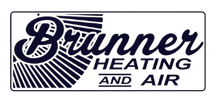Frequently Asked Questions
Please reach us at if you cannot find an answer to your question.
The lifespan of an HVAC system depends on various factors, including the type of system, how often it is maintained, and how well it is taken care of. However, most HVAC systems last between 10 and 15 years.
We offer a range of HVAC maintenance services, including filter replacement, coil cleaning, refrigerant level checks, and more. Regular maintenance is essential to keep your HVAC system running efficiently and to prevent breakdowns. Check out our Preventative Maintenance tab for more info!
Most HVAC experts say once a month is a pretty good rule of thumb for most people, but depending on where you live and how much dirt, pet dander, and other contaminants are present, the answer could be more or less frequent. It's always best to check your filter frequently to determine if it needs to be changed.
During an HVAC installation, our technicians will assess your space and recommend the best system for your needs. They will then remove the old system, install the new one, and test it to ensure it is functioning properly.
HVAC systems should have scheduled check-ups at least once a year to make sure everything is operating efficiently. Technicians should inspect your system, lubricate components, and repair or replace any malfunctioning parts. Check out our Preventative Maintenance tab for more info!
A Zoning System separates your air conditioning system’s ductwork into different sections, allowing you to maintain a control temperature in each section, so that you can have more targeted and efficient air conditioning. For example, if you have a room that gets hotter in the summer and may need more air to cool down, but you also have a guest room on the other end of the house, you can direct more air to the hot room and less air to the guest room. This allows for more efficient use of your HVAC system and a more comfortable home.
IAQ is a rising concern, as many studies have shown that air pollution is much worse indoors than it is outdoors. You can improve your indoor air quality with frequent cleaning such as dusting and vacuuming, and you can also install devices such as UV light units, special air filters, and electronic air cleaners. Poor indoor air quality, especially during cold and flu season, has been linked to many illnesses, so improving your home’s air quality is an investment worth making.
A lot of factors go into what size heating and cooling unit a home needs. The type of house you own, its walls, insulation, attic space, and more can go into determining what size unit is required. A system that is too large could result in a home that’s too humid, causing problems with moisture and mold. A system that is too small will run constantly, running up your energy bill. Only a qualified heating and cooling technician can determine what size unit is best for your home.
In most cases, the answer is yes. There are a variety of reasons why you should replace both the outdoor and indoor units simultaneously. For starters, air conditioner and heat pump outdoor units are manufactured to work with a matched indoor unit. When you mix and match units, it can result in reduced efficiency and performance.
Also, if you bought your indoor and outdoor units at the same time, your indoor unit will probably be approaching the end of its useful life at about the same time as the outdoor unit. By not replacing the indoor unit too, all you’re doing is delaying the inevitable and likely paying higher energy bills at the same time.
By purchasing indoor and outdoor units simultaneously, you’ll get a warranty covering the whole system, meaning that you won’t have to cover the full cost of any needed repairs to your unit during the warranty period.
Brunner Heating & Air LLC
PO Box 128 or 501 County Road 101, Oxford, Mississippi 38655, United States

Schedule your PMA today!
Keep your system in tip-top shape with our comprehensive Preventative Maintenance Plan!
